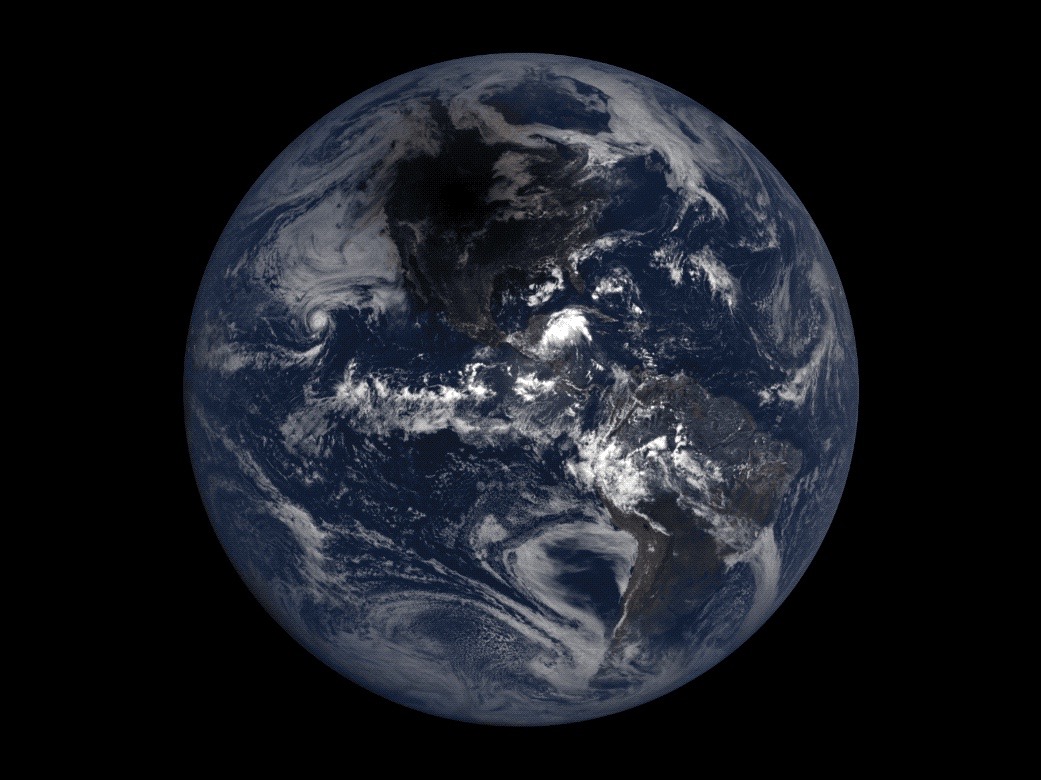'EPIC' Solar Eclipse View Captured from 1 Million Miles Away (Video)
It's one "EPIC" eclipse view: NASA's Earth Polychromatic Imaging Camera, aka EPIC, recorded the moon's shadow crossing the United States yesterday (Aug. 21) from 1 million miles (1.6 million kilometers) away.
EPIC rides through space on the National Oceanic and Atmospheric Administration's Deep Space Climate Observatory (DSCOVR) satellite. The camera usually takes 20 to 22 images of Earth each day — and NASA combined yesterday's photo haul into a gorgeous time-lapse video showing the march of the "Great American Solar Eclipse."
This eclipse was extra-special for the United States, as millions of viewers watched totality cross the nation coast to coast for the first time since 1918. But DSCOVR is always viewing Earth's sunlit side, so it frequently gets the chance to watch the moon's shadow cross Earth during total and annular solar eclipses.

DSCOVR sits at Lagrange Point 1, a gravitationally stable spot between Earth and the sun where spacecraft can more or less "park." The satellite launched in 2015, and its photos allow researchers to track clouds and weather systems' movement across the surface, as well as changes in deserts, forests and seas.
DSCOVR also monitors the levels of ozone and aerosols in Earth's atmosphere; vegetation; and how much ultraviolet light Earth reflects, NASA officials have said. On the sun side, DSCOVR monitors the stream of charged particles flowing away from the sun, called the solar wind.
Email Sarah Lewin at slewin@space.com or follow her @SarahExplains. Follow us @Spacedotcom, Facebook and Google+. Original article on Space.com.
Get the Space.com Newsletter
Breaking space news, the latest updates on rocket launches, skywatching events and more!
Join our Space Forums to keep talking space on the latest missions, night sky and more! And if you have a news tip, correction or comment, let us know at: community@space.com.

Sarah Lewin started writing for Space.com in June of 2015 as a Staff Writer and became Associate Editor in 2019 . Her work has been featured by Scientific American, IEEE Spectrum, Quanta Magazine, Wired, The Scientist, Science Friday and WGBH's Inside NOVA. Sarah has an MA from NYU's Science, Health and Environmental Reporting Program and an AB in mathematics from Brown University. When not writing, reading or thinking about space, Sarah enjoys musical theatre and mathematical papercraft. She is currently Assistant News Editor at Scientific American. You can follow her on Twitter @SarahExplains.









